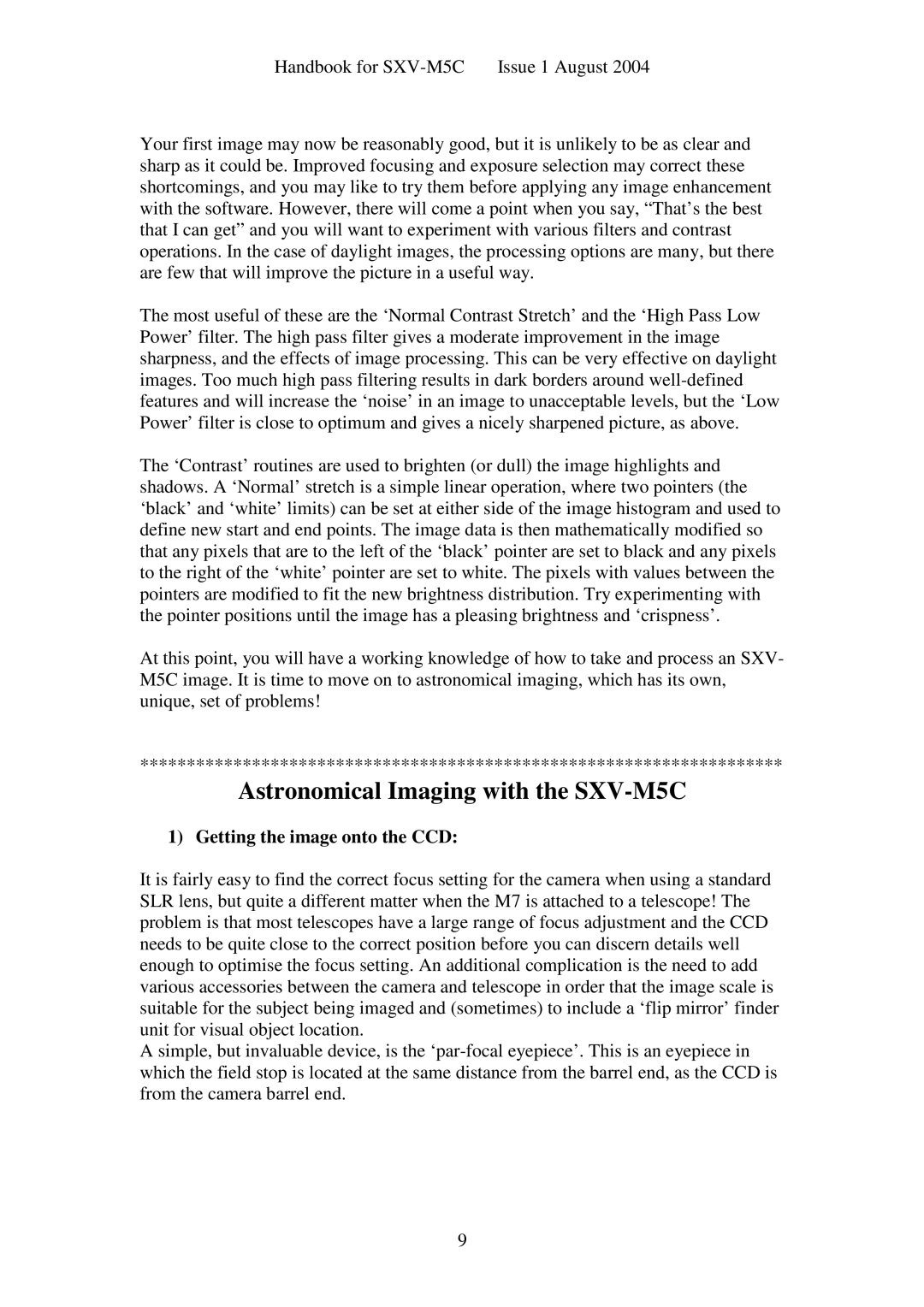Handbook for
Your first image may now be reasonably good, but it is unlikely to be as clear and sharp as it could be. Improved focusing and exposure selection may correct these shortcomings, and you may like to try them before applying any image enhancement with the software. However, there will come a point when you say, “That’s the best that I can get” and you will want to experiment wit h various filters and contrast operations. In the case of daylight images, the processing options are many, but there are few that will improve the picture in a useful way.
The most useful of these are the ‘Normal Contrast Stretch’ and the ‘High Pass Low Power’ filter. The high pass filter gives a moderate improvement in the image sharpness, and the effects of image processing. This can be very effective on daylight images. Too much high pass filtering results in dark borders around
The ‘Contrast’ routines are used to brighten (or du ll) the image highlights and shadows. A ‘Normal’ stretch is a simple linear oper ation, where two pointers (the ‘black’ and ‘white’ limits) can be set at either si de of the image histogram and used to define new start and end points. The image data is then mathematically modified so that any pixels that are to the left of the ‘black’ pointer are set to black and any pixels to the right of the ‘white’ pointer are set to whit e. The pixels with values between the pointers are modified to fit the new brightness distribution. Try experimenting with the pointer positions until the image has a pleasing brightness and ‘crispness’.
At this point, you will have a working knowledge of how to take and process an SXV- M5C image. It is time to move on to astronomical imaging, which has its own, unique, set of problems!
*********************************************************************
Astronomical Imaging with the SXV-M5C
1) Getting the image onto the CCD:
It is fairly easy to find the correct focus setting for the camera when using a standard SLR lens, but quite a different matter when the M7 is attached to a telescope! The problem is that most telescopes have a large range of focus adjustment and the CCD needs to be quite close to the correct position before you can discern details well enough to optimise the focus setting. An additional complication is the need to add various accessories between the camera and telescope in order that the image scale is suitable for the subject being imaged and (sometimes) to include a ‘flip mirror’ finder unit for visual object location.
A simple, but invaluable device, is the
9
